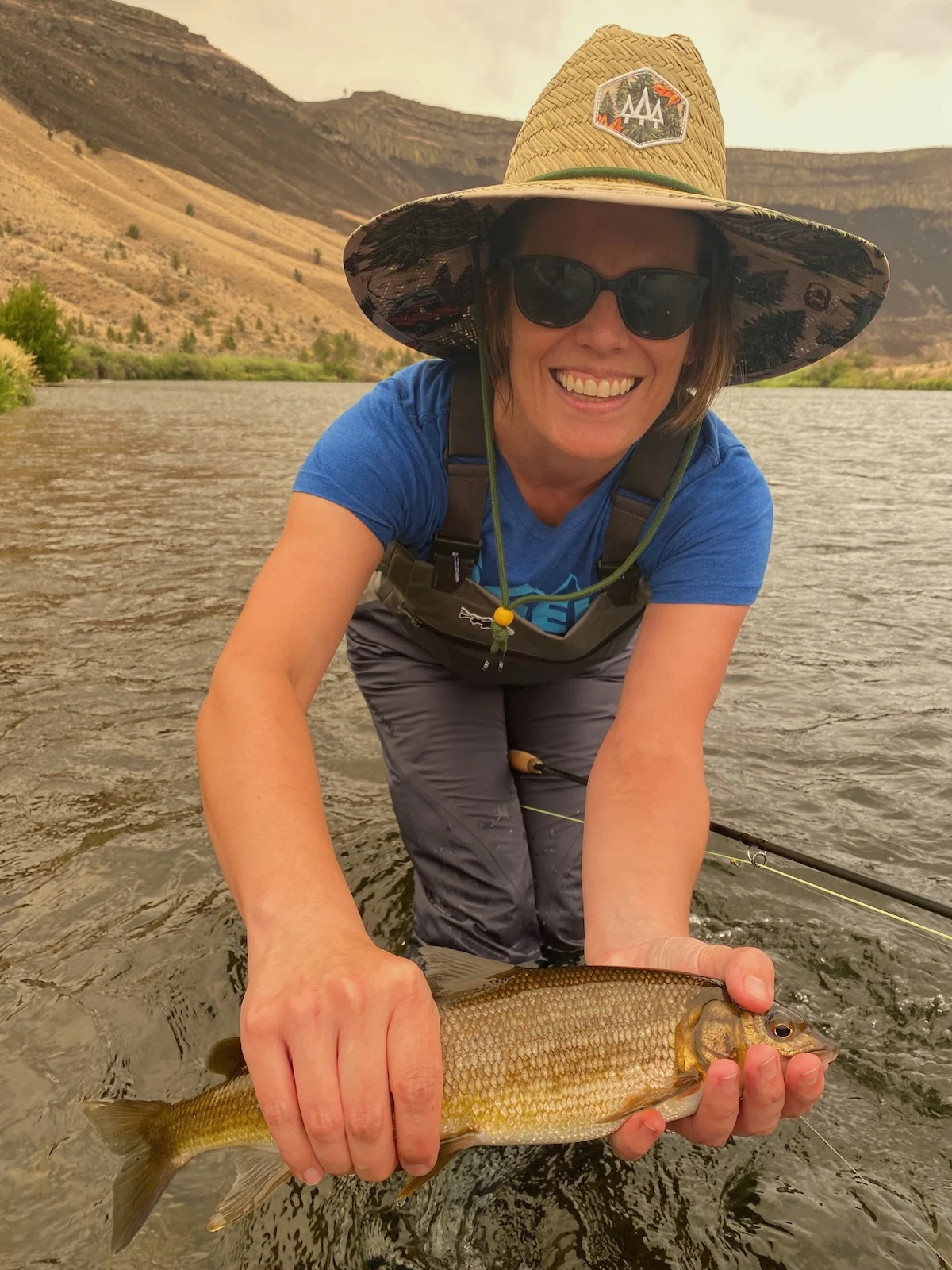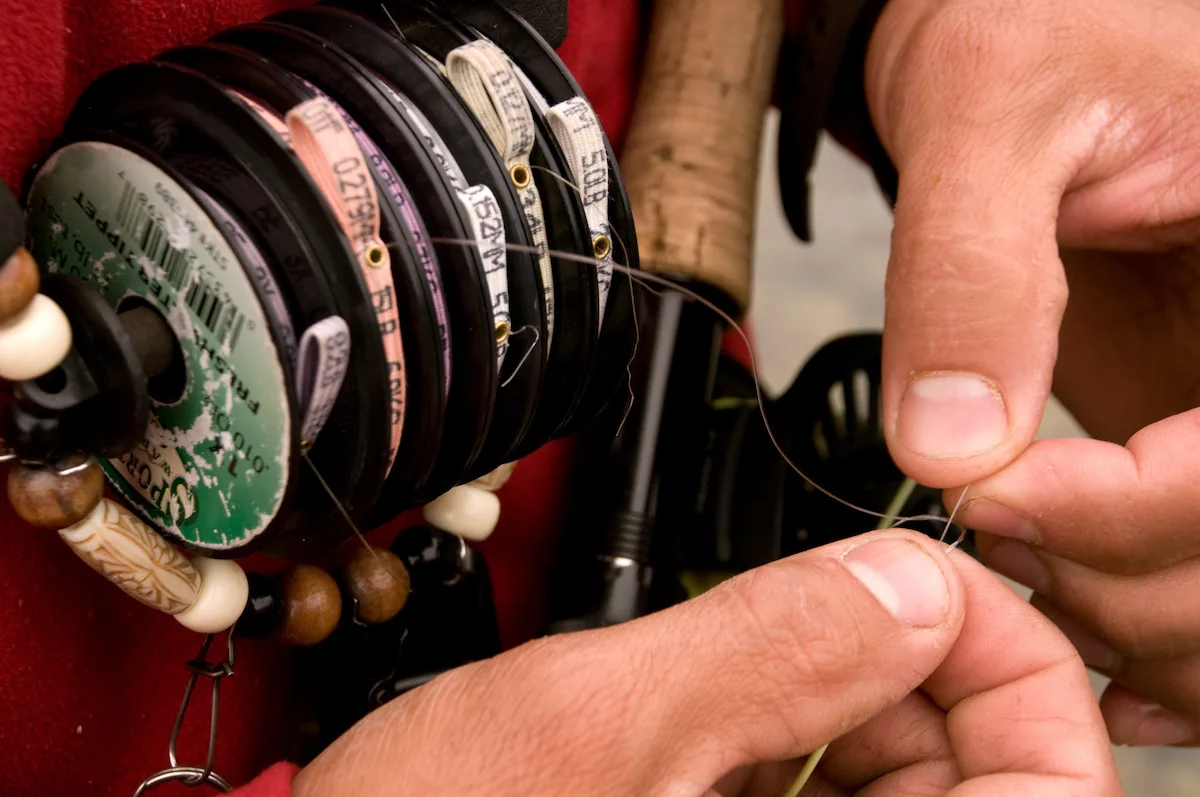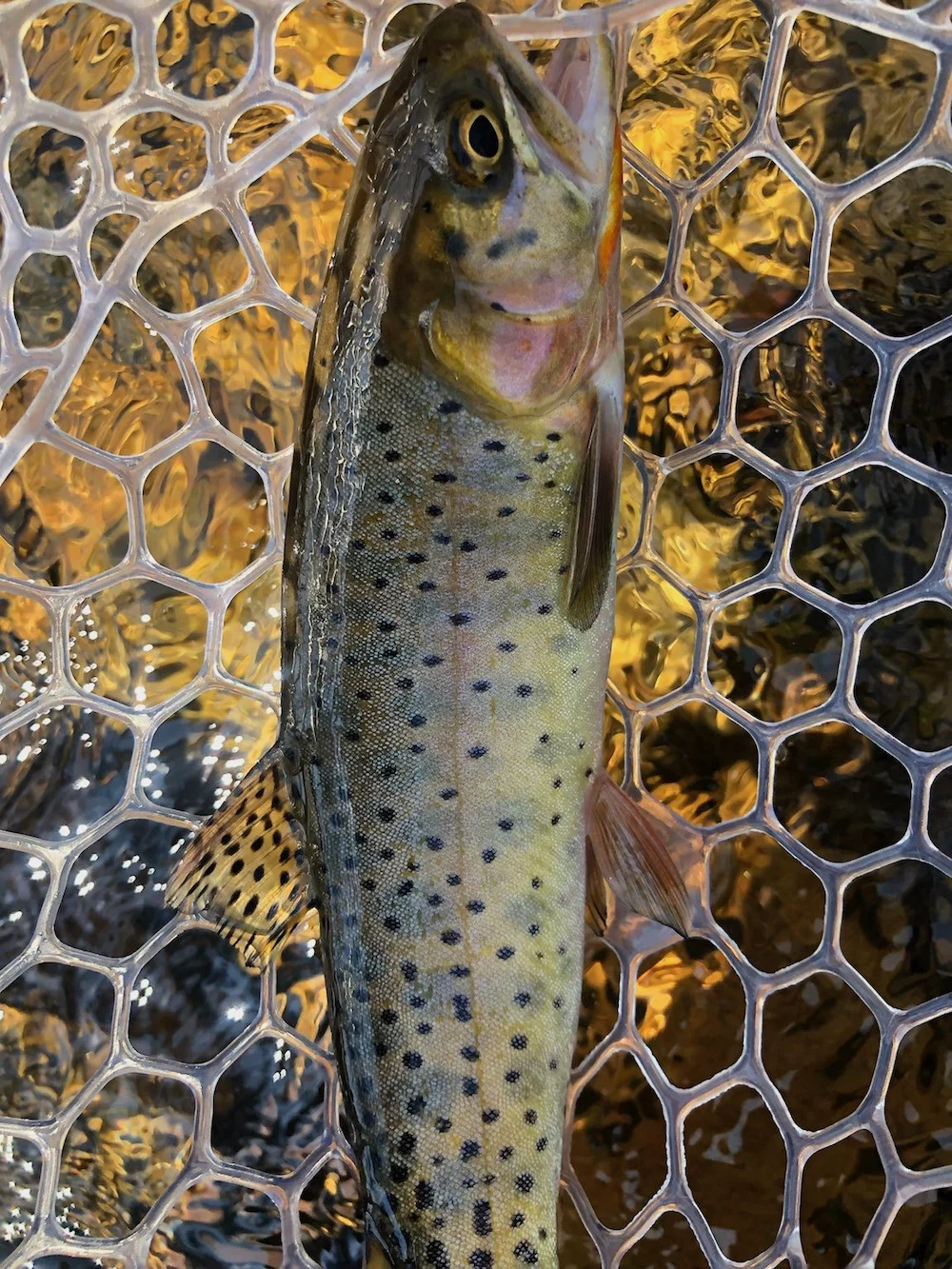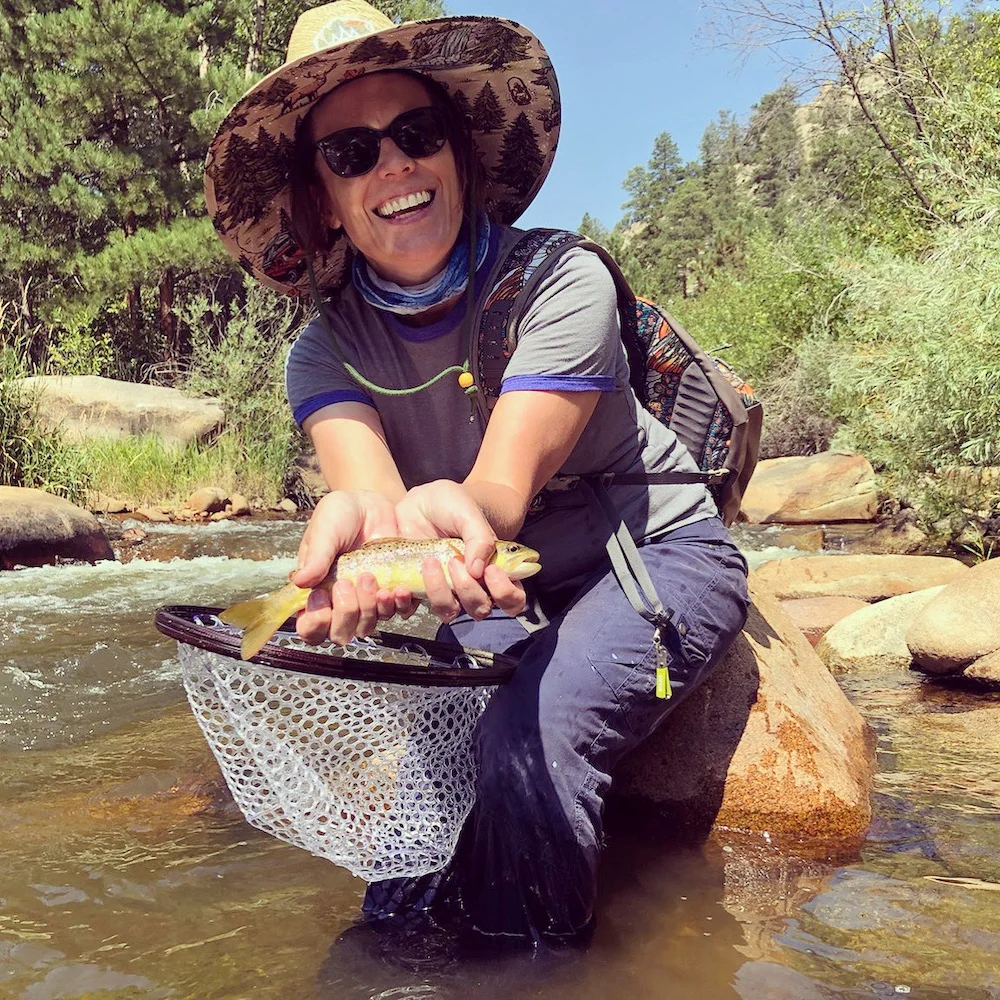Catch and release fly fishing is a method of letting fish back into the water after capture. Here are my top tips for success.

If you’re new to fly fishing, let me tell you something that’s going to make you feel better straight out of the gate: I almost killed the first fish I ever caught. I had to rely on someone else to get him going again, because I traumatized the poor guy.
I didn’t stun him with my good looks or fishing prowess, but with my improper handling methods. Luckily he was tough and he finally swam away. I like to tell myself that he survived (he did, right?).
After that, I decided that I didn’t want to be a fish murderer and that I needed to learn proper catch and release techniques. With more people on the rivers fly fishing than ever before, pressure on the fish can be high at times.
In order to maintain healthy rivers and healthy populations, catch and release fishing is important. To be able to enjoy this activity for years to come, and ensure that there’s fish for everyone . . . it’s common sense that you put them back. And humanely, so that the fish survive.
Is there a guarantee that the fish you catch will survive your handling, even if you follow all of the tips below? No, but nothing in nature is certain, and that’s really the only sure thing. The best you can do is educate yourself, practice, and be a good steward. A lot of fisheries wouldn’t survive without people like us being responsible. So let’s do this together, okay?

Catch and Release Fishing
The idea behind catch and release is just as it sounds – you’re hooking the fish on your line, bringing it to your net and catching it, and then releasing it back into the wild. Here’s everything you should observe when using this method on your fly fishing trip.
Know the Regulations
If you’re reading this, you’re likely already on board with catch and release fishing, but you should still know what is required wherever you’re going. You can’t use bait in fresh waters in national parks, and sometimes there are soles prohibited on your wading boots to preserve native species. Learn the regulations of wherever you are going; they are designed to protect the fish and other native species of the area.
Watch Water Temps
Warm water doesn’t hold as much oxygen as cold water, and temperatures above 68° F can be stressful on your aquatic friends. Studies show that temps over 70° F can be lethal to most trout – they can’t handle the water temps as well as the stress and over-exhaustion of being caught. Try fishing early in the morning if it’s going to be a warm day.
Use Barbless Hooks
A hook with no barbs removes easily from a fish’s mouth – and from your clothing. Whether you purchase the flies from a fly shop or tie them yourself, use fishing hemostats to flatten or crimp the barbed portion of the hook against the shank.

Use Proper Equipment
If your leader and tippet are too light, you’re going to have to fight the fish more to land it. Fish with a heavier, appropriate leader so that you can land the fish as quickly as possible. Avoiding a long struggle is important for survival.
Also be sure to have a rubber net for catching. You don’t want anything with knots or string netting that can get caught in a fish’s gills or tail. Check out my fly fishing essentials for more info.
Play the Fish Well
A fish obviously doesn’t want to be caught, so when it happens the fish: 1) fights and 2) gets stressed out. Just like humans, cortisol levels rise when they are struggling. Lactic acid also builds up as the fish is exhausting itself.
“Playing a fish” is the process of landing a fish after you hook it, and you want to reduce this window to be as small as possible. The general guideline is to keep it under two minutes. Trout don’t recover as quickly, and this makes them susceptible to suffocating or being eaten.
If you’re a science-y type person and want all the details on fish stress, duration, and air exposure, go here.
Wet Your Hands
Trout have a protective, slimy coating over their bodies that protects them from infection and diseases. You don’t want to remove the coating, so wet your hands to reduce friction. Maintain the mucus is my mantra!
Keep your fingers away from the fish’s gills or eyeballs. You can kill a fish by putting your fingers under the gill plate.

Keep the Net in the Water
Remember that fish cannot breathe out of water. Place the handle between your legs and keep the net portion down in the water, keeping the fish submerged at the same time. If you can remove the hook without touching the fish, this is ideal – but it takes some practice.
Take a Quick Photo
Have your camera/phone ready, and don’t take a picture of every single trout that comes your way. Especially if the fish seems stressed out already. Ultimately taking less pictures helps you enjoy the moment more too, at least that’s what I’ve found. I feel that if you are judicious and selective about the images you take, the river rewards you. Just trust me on this.
Oh, keep the fish over the water when taking a picture rather than land or rocks. If you drop your trout, he goes back into the drink and is more likely to survive.
Don’t Squeeze Him (or Her)
I have a River Monsters addiction, so at some point in my mind I developed the idea that fish are tougher than they are. If a fish can kill a person, that means they can kick my ass and so I’m going to have to wrestle this thing to the bottom of the river. This is not accurate.
The truth is, salmon and trout are strong, but they aren’t invincible. Fish don’t have much in the way of skeletons, so you don’t want to squeeze hard around the organs, especially when they are already under stress. Hold the fish just behind the pectoral fins on the belly with the other hand right in front of the tail. Grabbing a fish firmly near the tail can calm them down.

Keep the Fish Upright
This is something a guide taught me. If you release the fish on its side, it can stress the organs and cause the fish to float to the top of the water and die. It seems like common sense to release a fish the way it swims, but in the excitement of the moment, this can get lost (ask me how I know). Especially if you’ve tilted your little friend to make him look bigger in a picture.
Release Upstream
Holding a fish in medium moving water is a good idea because this moves more oxygen through the gills. Hold them or keep them in the net until you can tell they are ready to move on their own, then release. Reviving a fish can take 30 seconds to 5 minutes depending on how long the fight was. Let it swim away when it’s ready.
If you end up killing a fish, you’re not the worst human being in the world. Just follow the steps and you’ll get the hang of catch and release fly fishing. I promise.
If you have any tips for this method, I’d love to know in the comments!
